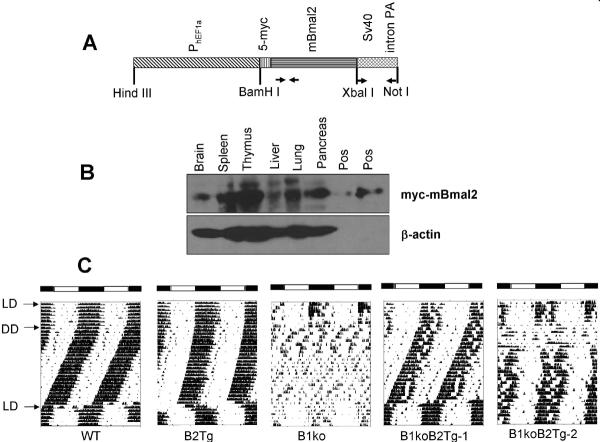Fig. 1. Constitutive expression of mBmal2 can rescue locomotor activity rhythms of the mBmal1-knockout mouse.
(A) Structure of the Bmal2-transgene vector (“5myc-Bmal2”). The coding region of mBmal2 (cDNA) was fused to an upstream region consisting of 5 tandem repeats of the c-myc sequence (5-myc) and the human EF-1α promoter and to a downstream region composed of the SV40 intron-poly(A) sequence [23]. Primers used for the screening of the transgenic mouse lines are indicated below the construct as arrows.
(B) The expression of 5myc-Bmal2 in the mouse with or without Bmal2 transgene was analyzed by immunoblotting with an anti-myc-tag antibody. Lysates from HEK293 cells with 5myc-Bmal2 transfection was used as the positive control, and β-actin was immunoblotted as the loading control.
(C) Locomotor activity records. Representative activity records (actograms) are shown in the double-plotted format. Animals were initially in a 12 h light/12 h dark cycle (LD) for at least 10 d and were then transferred to constant darkness (DD). After at least 20 d in DD, the mice were re-entrained to LD. Arrows indicate transitions between different LD cycles. For the B1ko/B2Tg mice, four mice showed a complete behavioral rescue (B1ko/B2Tg-1 is a representative example), while three mice showed partial rescue (e.g., B1ko/B2Tg-2). White and black bars at the top of the actograms indicate the LD cycle when present. Summary data, including power spectra, period, and activity levels, are depicted in Fig. S2.

